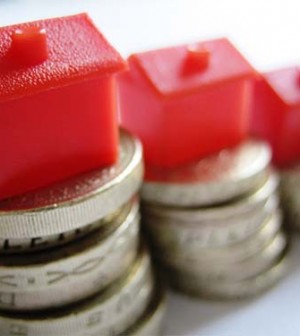- 4 Unexpected Things I’ve Learned From Buying My First Mobile Home Park
- How Ironic: America’s Rent-Controlled Cities Are Its Least Affordable
- U.S. homes are still a bargain on the international market
- Getting The Best Possible Quality Photos On MLSs and Syndicated Sites
- Home buyers in these markets have the upper hand
Pending Sales Dip as Investors Back Out of Market

The number of contracts signed to buy previously-owned homes slipped in August, another sign that investors are backing out of the market amid the threat of rising interest rates and a declining number of distressed homes available for sale.
The Pending Home Sales Index, which tracks contract signings (as opposed to closed sales), fell 1% in August to 104.7 from July, the National Association of Realtors said Monday. Though that was a greater decrease than economists projected, the index remained above the 100 mark that NAR considers an “average” level of contract activity for the fourth consecutive month.
Compared with one year earlier when the index stood at 107.1, pending home sales were down 2.2%. Last month’s index was at the second-highest level since August 2013.
“Fewer distressed homes at bargain prices and the acknowledgement we’re entering a rising interest rate environment likely caused hesitation among investors last month,” said Lawrence Yun, NAR’s chief economist. “With investors pulling back, the market is shifting more towards traditional and first-time buyers who rely on mortgages to purchase a home.”
Recent housing data aligns with that analysis. Last week NAR said that sales of existing homes (closed transactions for previously owned homes) fell 1.8% in August as distressed home sales declined to an 8% share of the total. August marked the second consecutive month that distressed sales comprised a single-digit share of the market. One year earlier, they made up 12% of the market. Prices are still rising but price growth is slowing down, meaning fewer bargains are left on the market. The number of buyers paying all cash also fell in August, suggesting that fewer investors are active.
That opens up room for first-time homebuyers and regular people. First-time buyers have comprised less than a third of all buyers in every single month over the last two years, says NAR, marking a lower participation rate in the housing market than their historic levels. Eighty-one percent of first-time buyers used a conventional or FHA loan to purchase their home in 2013.
“The employment outlook for young adults is brightening and their incomes finally appear to be rising,” Yun said. “Jobs and income gains will help repay student debt and better position first-time buyers, setting the stage for improved sales growth in upcoming years.”
Late last year and the first part of 2014 saw the housing market soften along with rising mortgage rates followed by harsh winter weather and tight inventory conditions. Yun forecasts stronger existing-home sales for the second half of the year thanks to easing inventory levels, steady low interest rates, and slower price growth. NAR projects the national median existing-home price to grow between 5% and 6% this year and 4% and 5% next year…




 100% Secure
100% Secure
You must be logged in to post a comment Login